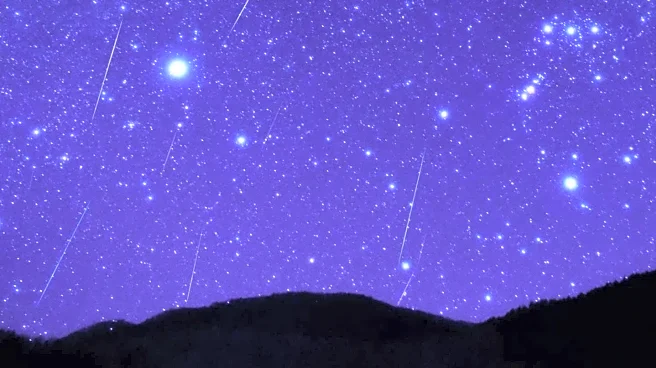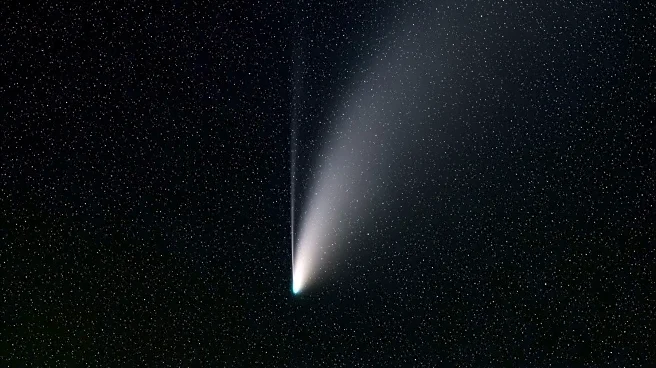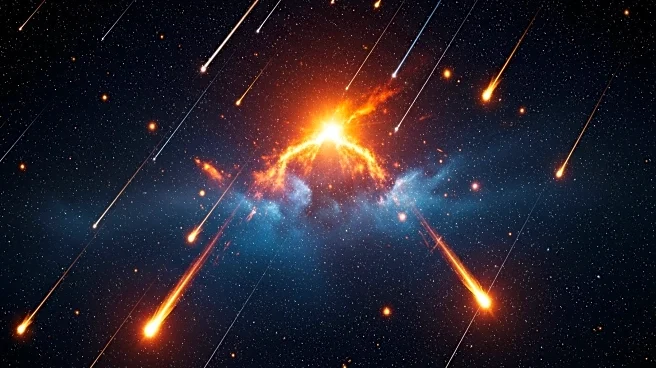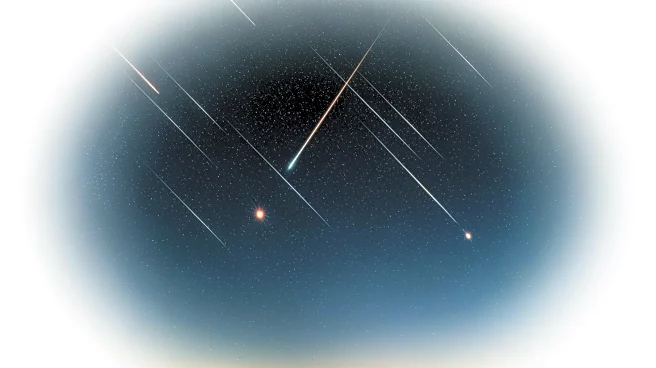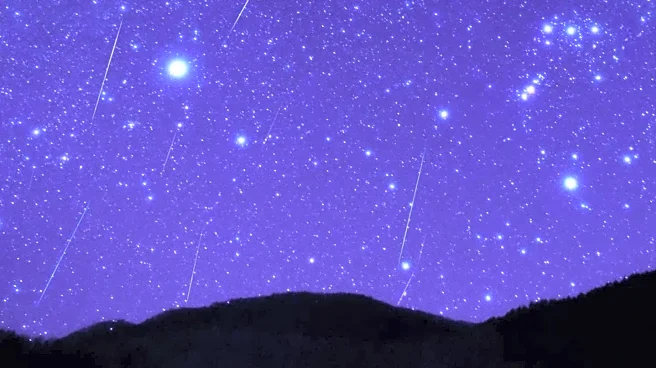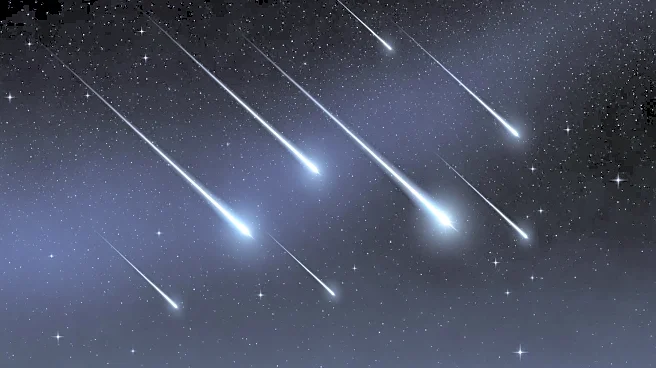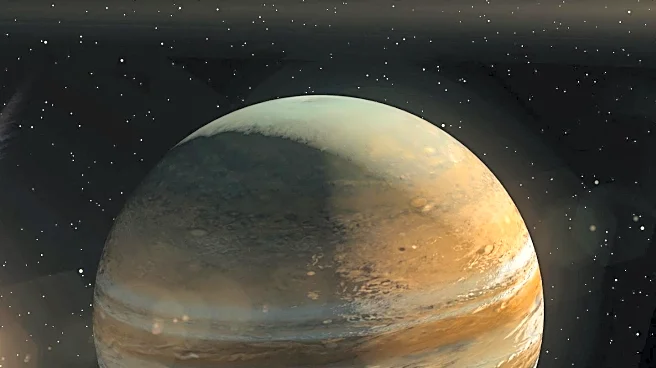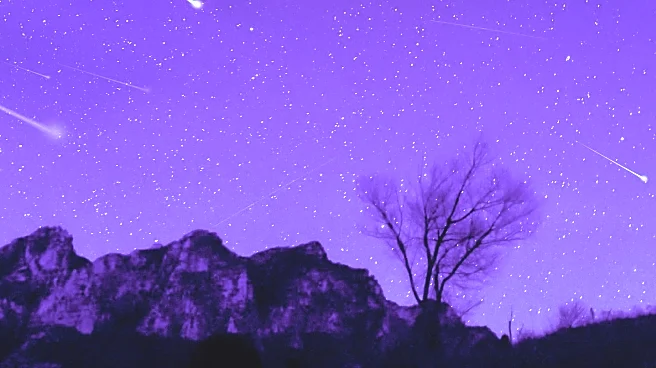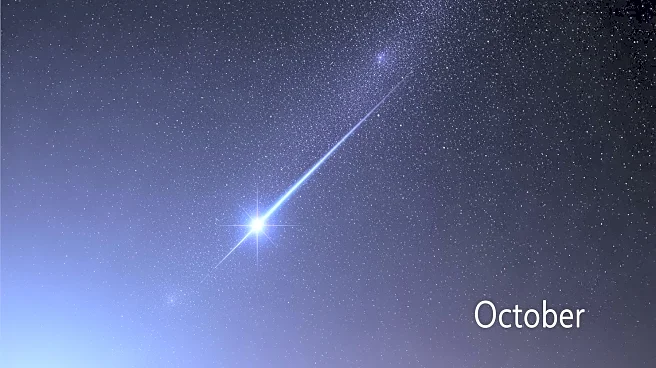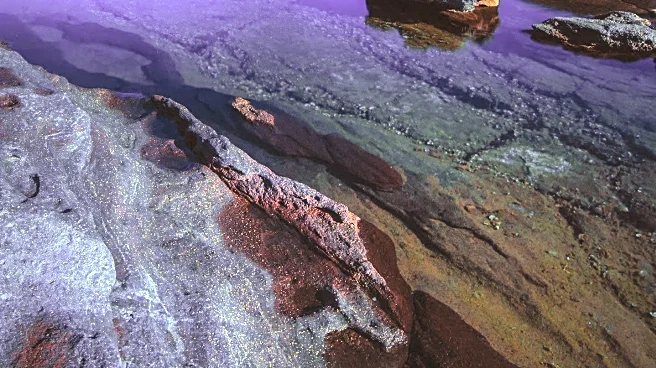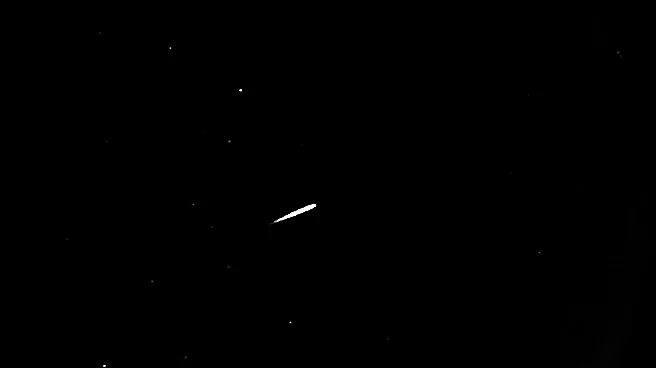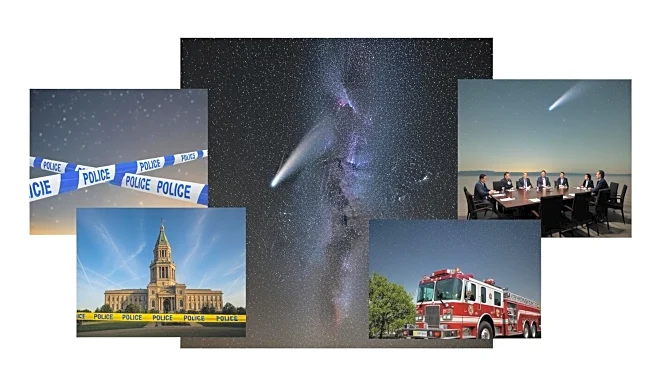What's Happening?
The Orionid meteor shower, originating from debris of Halley's comet, is set to peak with the arrival of a new moon, offering optimal viewing conditions. Thaddeus LaCoursiere, planetarium program coordinator at the Bell Museum in St. Paul, Minnesota,
notes that viewers can expect up to 20 meteors per hour during the peak on Tuesday morning. The shower will continue until November 7. Halley's comet, which passes near Earth every 75 years, leaves behind debris that causes two major meteor showers annually. The Orionids are known for sometimes leaving bright, lingering streaks in the sky.
Why It's Important?
Meteor showers like the Orionids provide a unique opportunity for the public to engage with astronomy and appreciate natural phenomena. Such events can inspire interest in science and space exploration, potentially influencing educational pursuits and public support for scientific research. The Orionid meteor shower, being visible without special equipment, allows widespread access to this celestial event, fostering community engagement and awareness of astronomical cycles.
What's Next?
The next major meteor shower, the Southern Taurids, is expected to peak on November 5, coinciding with a full moon, which may affect visibility. Observers are encouraged to find locations away from city lights and to watch during pre-dawn hours for the best experience. Continued interest in meteor showers can lead to increased public participation in astronomy-related activities and events.
Beyond the Headlines
Meteor showers like the Orionids highlight the ongoing interaction between Earth and cosmic debris, offering insights into the solar system's dynamics. They serve as reminders of Earth's place in the universe and the continuous movement of celestial bodies. Such events can also prompt discussions on space debris and its impact on Earth's atmosphere.
